The 20th of May is World Bee Day. This inspired me to tell you a little bit about my history with these little critters and about meliponiculture: breeding and management of melipon (stingless) bees.
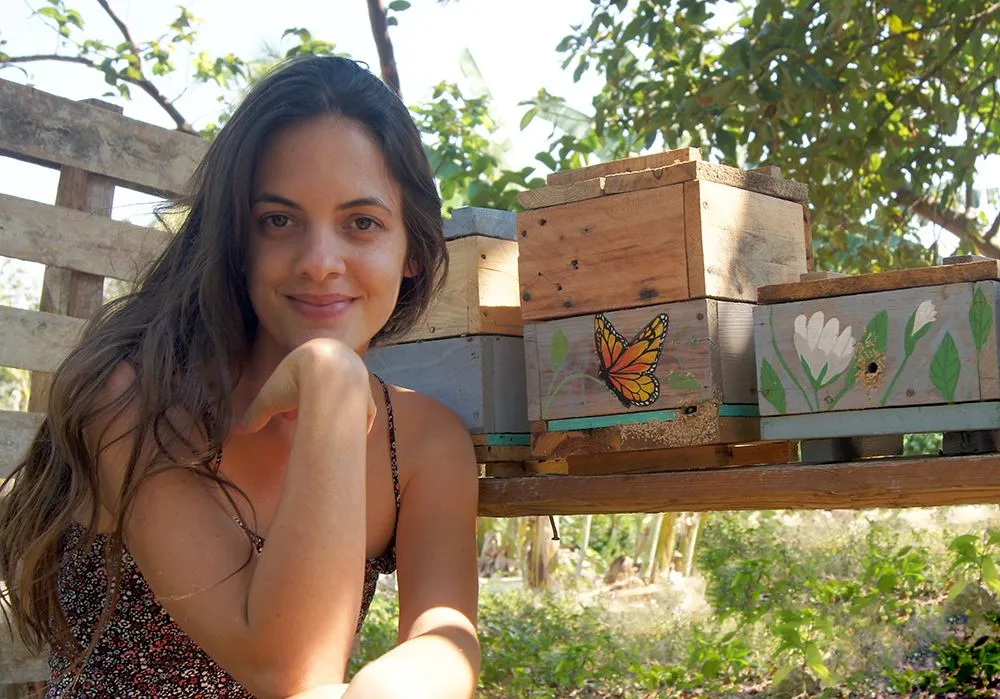
I would never have guessed that there was such a thing as a non-stinging bee. Like most people, I was unaware of its presence in this world. The melipona becheii is considered essential for the pollination of a wide variety of species, especially in tropical or warm areas.
The issue is that commercially these native bees have been replaced by European honey bees, due to their lower productivity. Their disappearance has reached such a point that, in Cuba, for example, they are only remaining in places with a lot of vegetation, where they find the right conditions and the highest concentration of melliferous blooms.
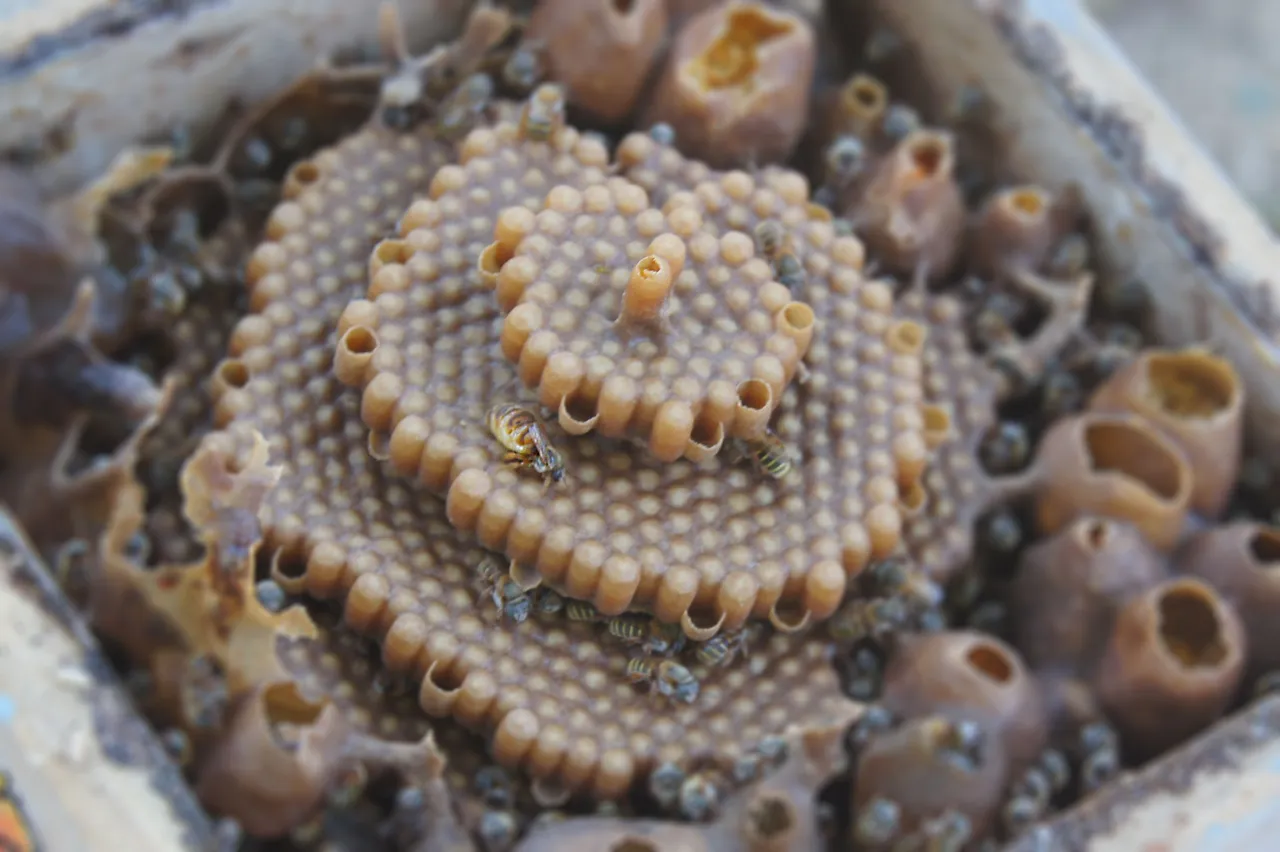
Disks of piglets and the queen walking on top of them.
My first encounter with this little critter was a couple of years ago. In search of organic honey I came across a self-taught honeybee farmer who had, at that time, an average of 100 hives. Amazed and fascinated by the discovery I became a faithful visitor of this gentleman and for months, I not only consumed his bee products, but also all his knowledge on the subject. With a flurry of questions and many practice sessions I learned the basics of beekeeping in a very primitive, Creole way.
El Toti, as everyone affectionately calls him, taught me everything he knew without expecting anything in return and with a passion that made me fall in love with this practice forever. We became friends very soon and when he knew I was ready he gave me two of his pups.
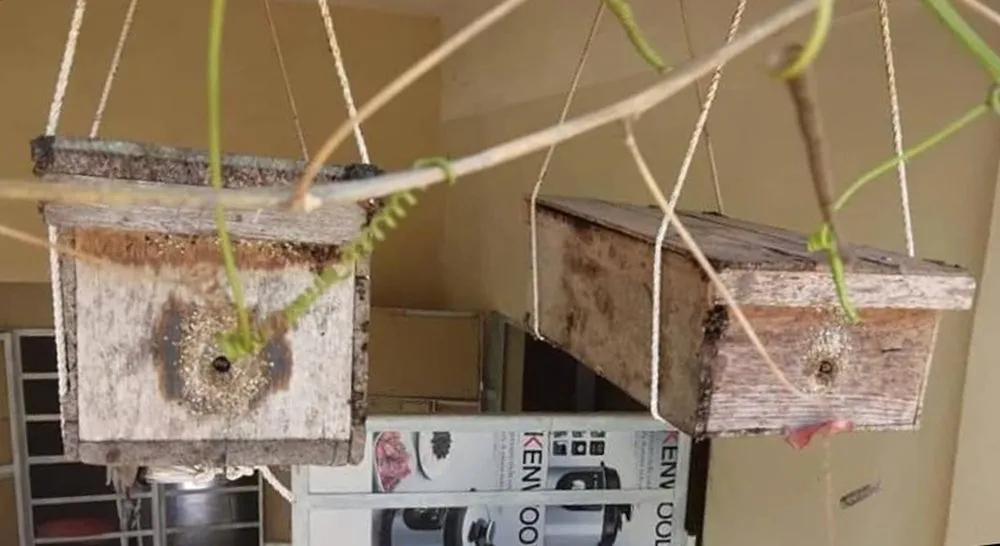
My first two hives in Creole boxes hanging from the ceiling.
For a long time I remained immobile, just watching them and, very occasionally, extracting a little pollen for my own consumption. Although each one had already filled the rustic wooden box where they lived, I did not dare to divide them to create new hives. I was honestly afraid of damaging them, as it is a very aggressive procedure for them.
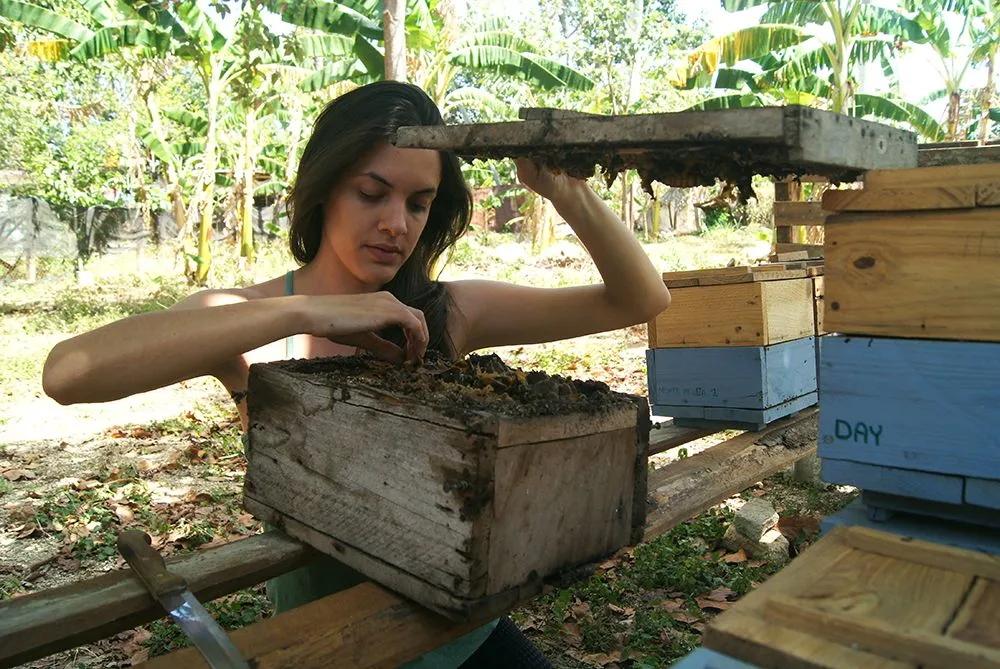
It was at that time, as fate would have it, that I met one of the promoters of meliponiculture in Cuba; a very enthusiastic and passionate guy who showed me other, nobler methods of dealing with them. The Inpa system of rearing melipon bees contains a design of boxes that facilitates the use of the bees. Knowing this method better, I decided to study and develop it, and today I have 12 very strong colonies with higher production and growth.
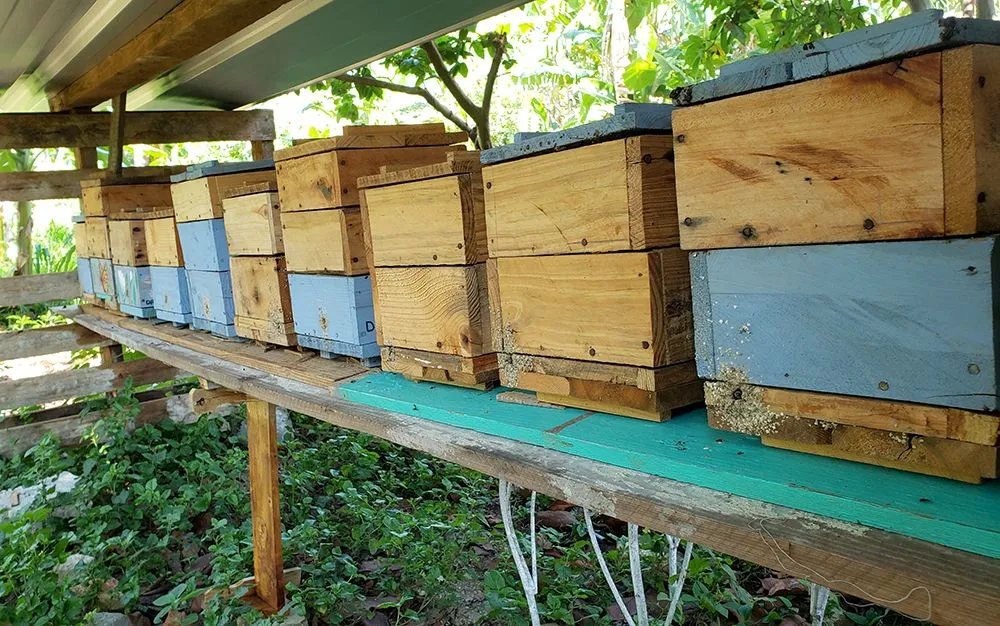
This is how the colonies in Inpa system boxes currently stand.🐝
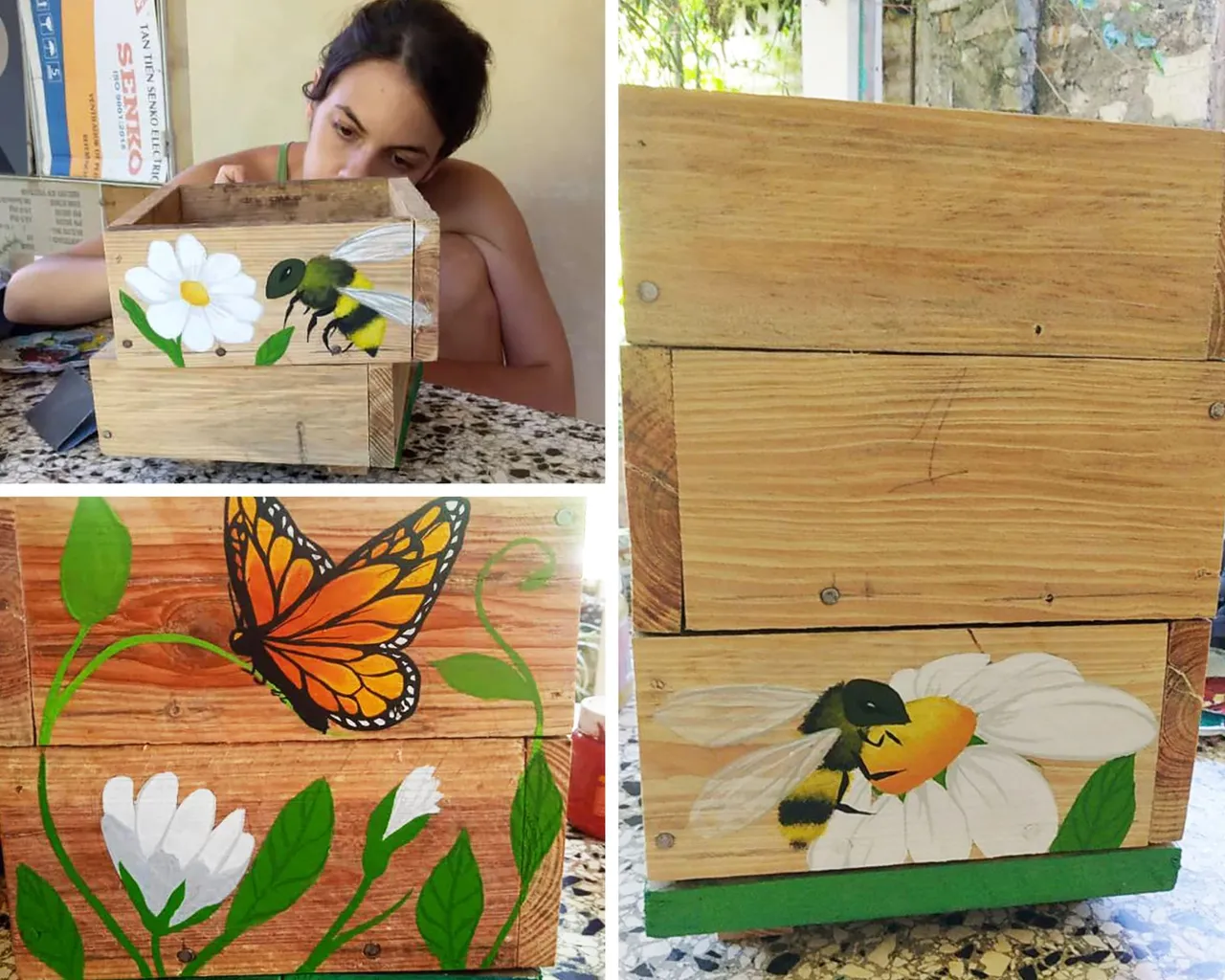
Decorating the first boxes of the Inpa system.😍
For me it is a privilege to have these results through a completely natural, ecological extraction without physical cost. The time I dedicate to it does not exceed two hours a week (for now) and if I spend more than that, it is for pure recreation.
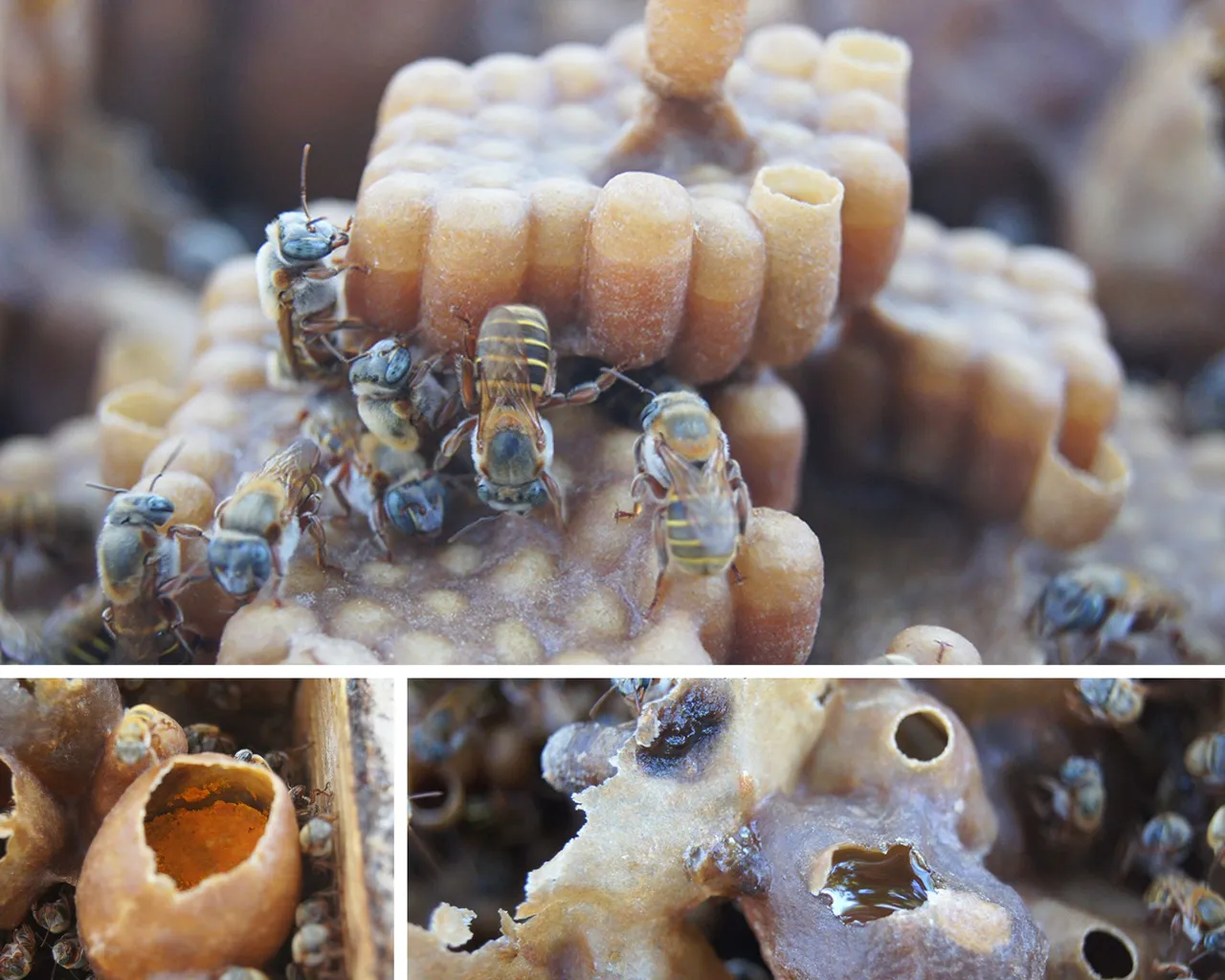
Brood cells above.
Pollen and honey reserves
My goal is to reach 100 hives and to help others get to know this wonderful world, where we not only promote sustainable practices, but also reconcile with our roots, with our essence.

Translated with: DeepL.com